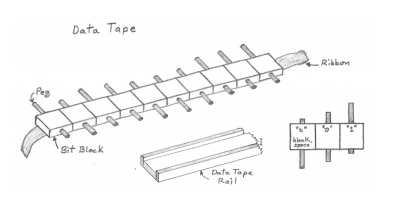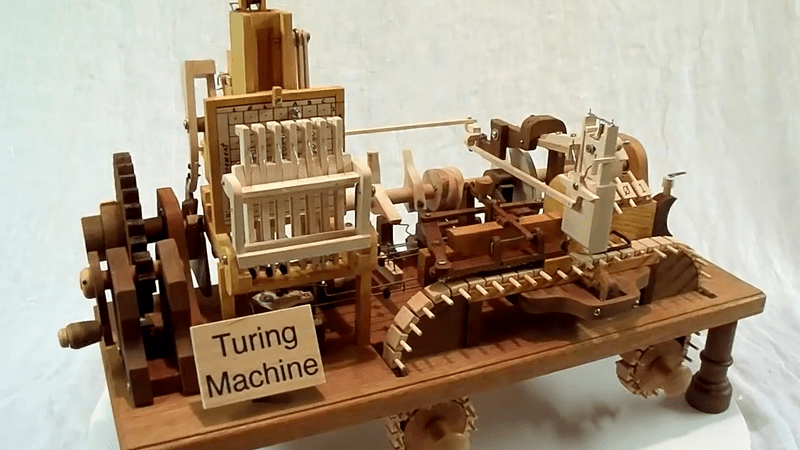Alan Turing theorized a machine that could do infinite calculations from an infinite amount of data that computes based on a set of rules. It starts with an input, transforms the data and outputs an answer. Computation at its simplest. The Turing machine is considered a blueprint for modern computers and has also become a blueprint for builders to challenge themselves for decades.
Inspired by watching The Imitation Game, a historical drama loosely based on Alan Turing, [Richard J. Ridel] researched Alan Turing and decided to build a Turing machine of his own. During his research, he found most machines were created using electrical parts so he decided to challenge himself by building a purely mechanical Turing machine.
 Unlike the machine Alan Turing hypothesized, [Richard J. Ridel] decided on building a machine that accommodated three data elements (0, 1, and “b” for blank) and three states. This was informed by research he did on the minimum amount of data elements and states a machine could have in order to perform any calculation along with his own experimentation and material constraints.
Unlike the machine Alan Turing hypothesized, [Richard J. Ridel] decided on building a machine that accommodated three data elements (0, 1, and “b” for blank) and three states. This was informed by research he did on the minimum amount of data elements and states a machine could have in order to perform any calculation along with his own experimentation and material constraints.
Read more about Richard’s trial and error build development, how his machine works, and possible improvements in the document he wrote linked to above. It’s a great document of process and begs you to learn from it and take on your own challenge of building a Turing machine.
For more inspiration on how to build a Turing machine check out how to build one using readily available electronic components.
















Now, attach a lathe to it and it will be a “Wooden Turing Turning” machine!
B^)
Attach it to a wood lathe and it could replicate itself! A mechanical wooden wood-turning Turing Von Neumann machine.
B^)
This is beautiful! It would be great to see a Clickspring version of this and a model from Evil Mad Science to complement their Digi-Comp II.
This looks so familiar… Wasn’t this (or maybe a 3D-printed version of the same mechanism?) posted within the last few weeks?
Don’t know about last few weeks, but the video is from 2015. So certainly possible you’ve seen it previously.
Just think of how much earlier the computer age could have been?
These kinds of things always remind me of that MacGuyver episode about the ancient Greek steam-powered computer :D
Antikythera Clock or Hero of Alexandria, but what would you do at the bottom of a gravity well.
Get wet feet, I suspect.
I think it’s time to start a “Best Hack of 2018” contest and peremptorily declare the winner.
“Bugs” are a very different kind of problem with this ‘computer’ and unwary debugging might give you splinters ;-)
The “bugs” would be termites.
Wow, an EMP proof, but possibly not virus proof computer, once its connected to the ‘net.
Are kits available?
I don’t see anything that couldn’t b made with a K40
Don’t know if that was an attempt at a joke, but I’d be surprised if more than a handful of the parts shown there could be cut on a K40.
The K40 is not really strong enough for hardwood. It can cut 1/4 birch plywood all day, but if you’re looking to cut something out of thick pieces of solid wood (which is looks like the majority of this machine is made out of), the power just isn’t there.
This is a job for a CNC router, not a laser.
I think that most parts could be made of multiple laminated sheets or if you are stuck print out the parts 1:1 on paper and glue to the hardwood and get the jigsaw going. Strong varnish on the k40 bits should make it work for a bit until you get output to your waterwheel power cnc router going
This looks like a candidate for 3D printing.
Can it run Doom?
How about giving this article the tag “Turing Machine”, too?